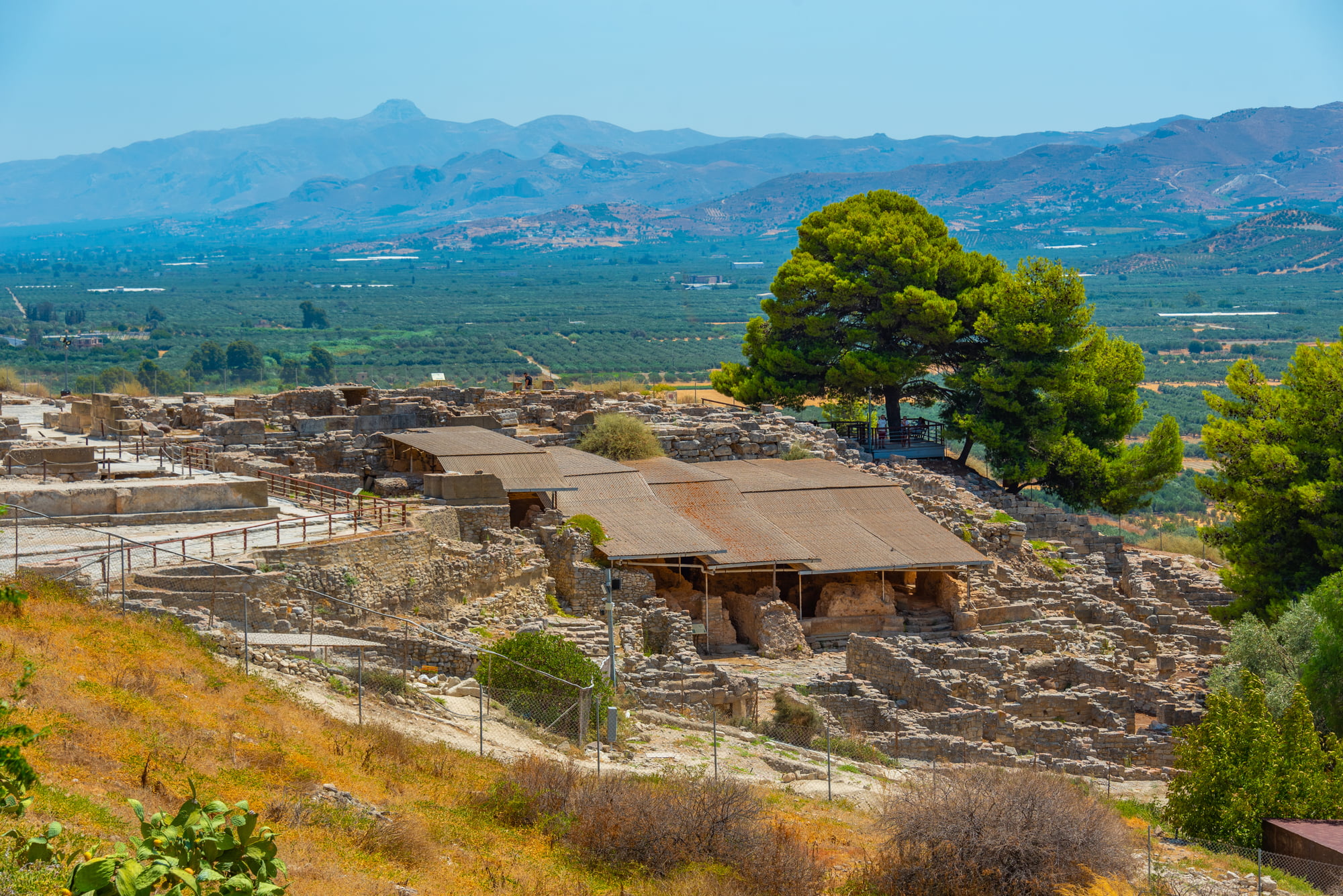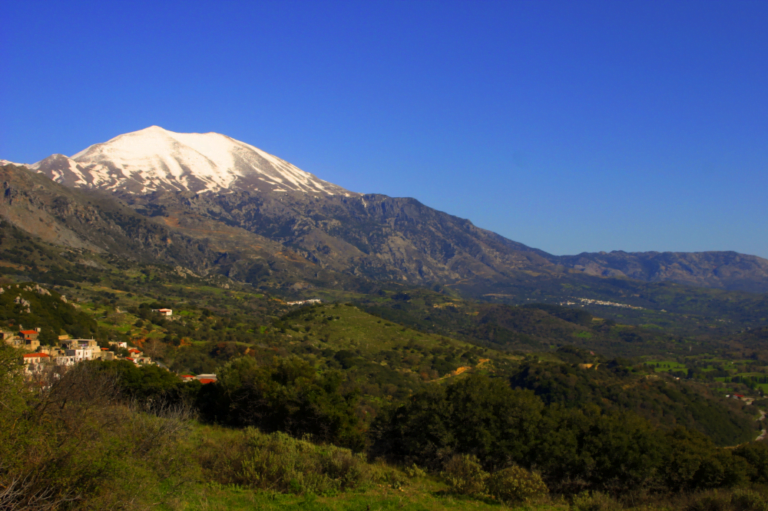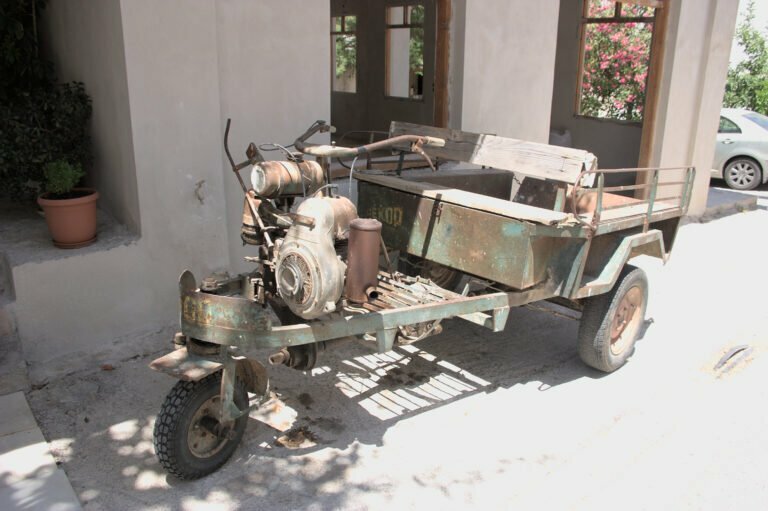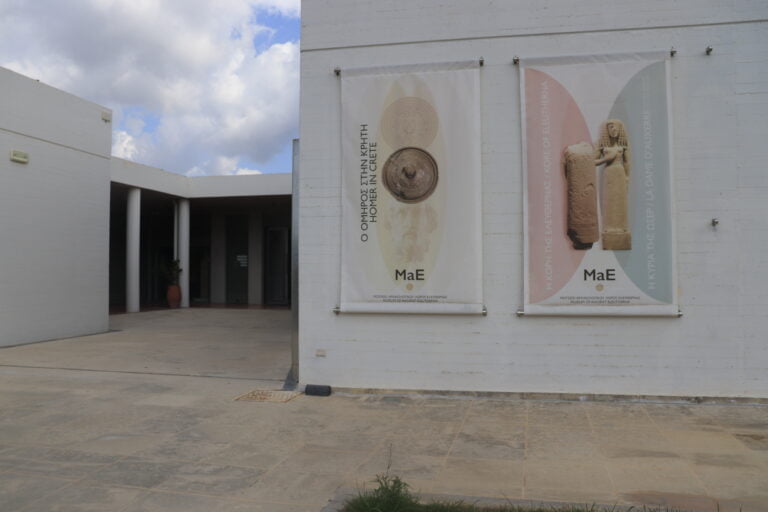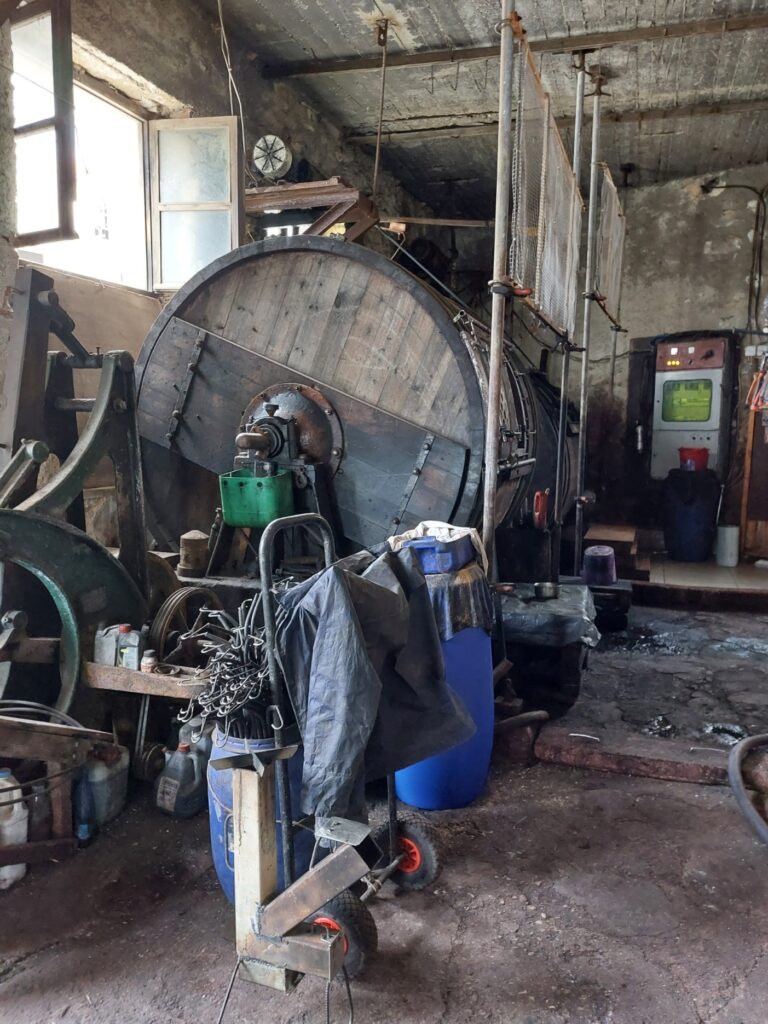Palaces of the Sea: The Minoan Civilisation Exploded
Recently I was sitting on a wooden bench overlooking the site of Festos in the Messara Plain south of Iraklion. It was a beautiful day, and my thoughts turned to the Minoans. Who were they? What did they do each day? How did they create the first European civilisation? Why was that civilisation so wonderful?

In all my years in Crete, I have been to most of the Minoan sites, the palaces, the farmsteads, the villages and the ports. It impressed me with the remains of what they built so many years ago. Particularly with Sir Arthur Evans’s reconstruction of Knossos. The beautiful frescoes and the works of art on the fine pottery they made. They seemed cultured people, sensitive to the land and the passing of the seasons.
So Quiet
Oh, but why were they so quiet? Why do we know so little about their daily lives? The Minoan civilisation began at the end of the Neolithic period (2,600 BC). It extended until it was destroyed a few years before 1400 BC. Archaeologists mark that period of twelve hundred years into various periods, the headings being Pre-Palace (2600-200 BC), Proto-Palace (2000-1700 BC), Neo-Palace (1700-1450 BC) and Post-Palace (1450 BC onwards). Professor Platon put this dating of the Minoans forward in 1958, which is now the accepted way of dating the Minoan period.
Mythology and Writing
We have the mythology, of course. The stories of King Minos of Crete (which is why Evans called them the Minoans) and the killing of the Minotaur – half man, half bull – by Theseus with the help of Minos’ daughter Ariadne. The stories of the engineer Daedelus and his and his son’s wings of feathers, but how much of this is relevant? Modern historians now believe that the term Minos was, in fact, the title of King, rather like the Pharaohs in Egypt. No one is sure. As for writing, there seemed to be a series of hieroglyphs famous in Minoan times which have never been deciphered but are shown, for example, on the Festos Disc found in the old palace section of Festos. Linear A, dated before 1500 BC, has never been translated but was certainly Minoan. Scholars later translated Linear B and found it to be of Mycenaean origin, not Minoan. Not that even that gives much information beyond lists of crops and possessions.
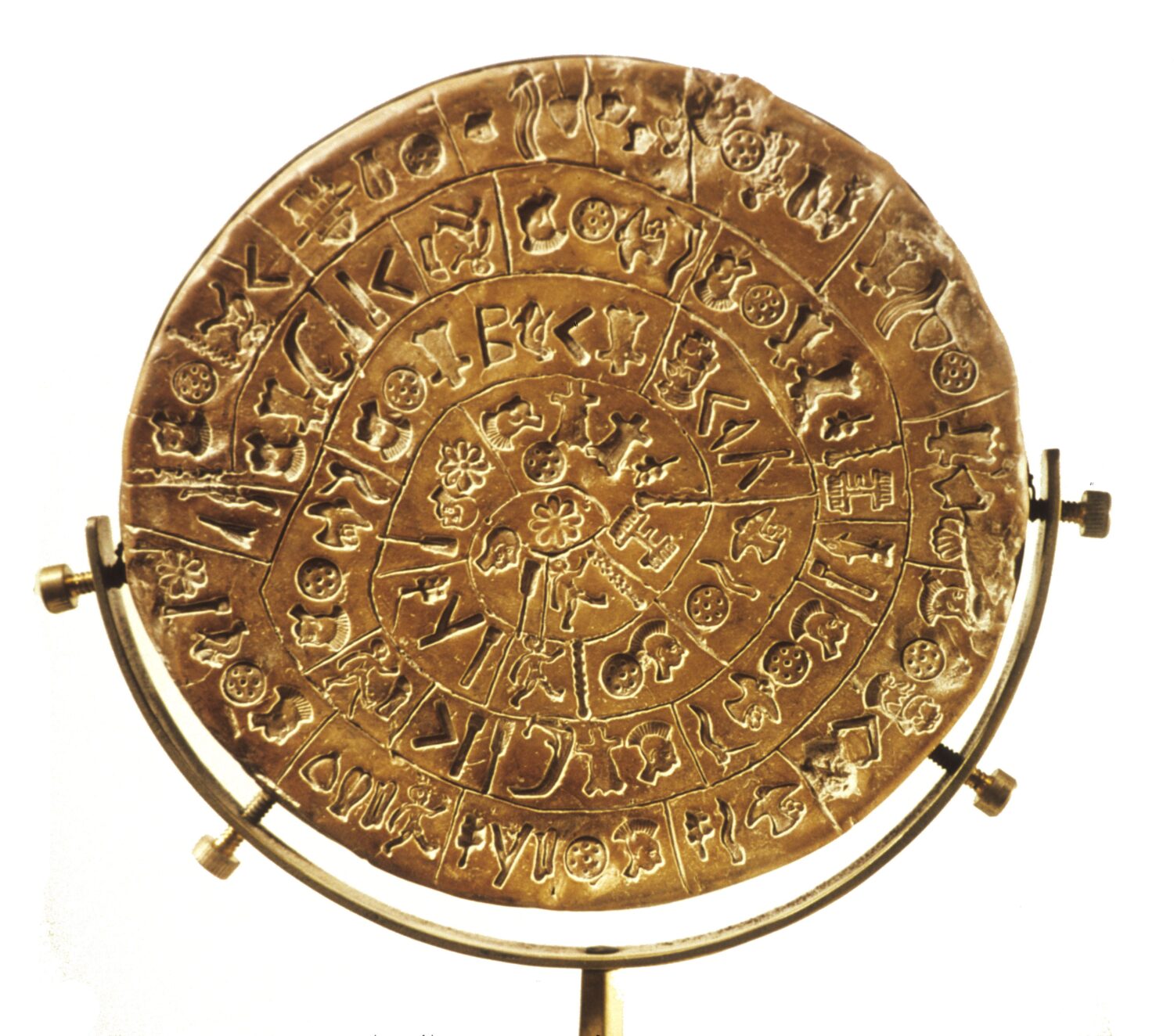
Researchers today have various opinions about what life was like during Minoan times. Others disagree. What was very important, though, and enabled the civilisation to grow and achieve its greatness is called Pax Minoica. The Minoans enabled their society to grow and achieve excellence by living in peace and never being invaded. There is a love for life in the Minoans as in the Cretans of today. They had their festivals to celebrate the harvest. They had their gods – the most important being the Earth Mother – and their respect and worship for the dead. Many Minoan cemeteries scattered about the island show care in tomb making, which is extraordinary so long ago.
Daily Life
Almost everyone was involved in farming and looking after herds of sheep, pigs, chickens, and so on. They used olive and wine presses but grew many more forests of Cretan Cypresses, a famous wood to make things from. Minoan art shows us many forms of rural life, festivals, tilling the ground and more. Still, there has also been a senior class, an aristocracy that demanded and was given fine clothes and jewellery. This class was clustered around the larger palace centres. It may have been related to or employed by the King and his family. Here the women had fine haircuts, if the frescoes are to be believed, and splendid long skirts that were finely cut and worn.
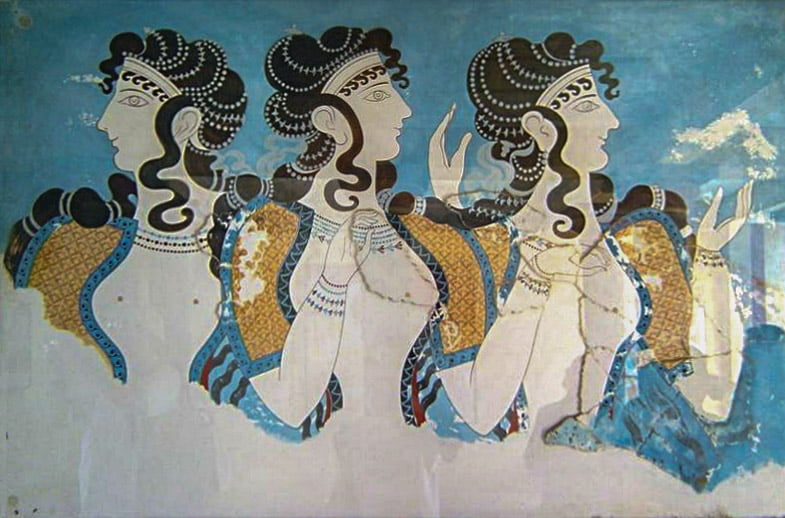
The most astonishing thing about the Minoans is the equality of men and women. Men ruled and dominated other civilisations of the time without exception. The women lived dull domestic lives, but not in Crete. Here the woman is equal to the man. On so much of the pottery, you can see that women danced with men, discussed matters with men, and were equal in all ways. All public and religious occasions had equal amounts of men and women mixed. This displays an essential attitude to life which becomes lost as the Minoans lose their civilisation and are resurrected in recent times.
Both Festos and Knossos have ancient theatres. The oldest in Europe, in fact, and here they would have festivals and games. The most famous game of the Minoans was the bull-jumping. A young man or woman would dive over the enraged bull’s horns, somersault on the bull’s back and land on the floor behind the bull. The action of this game is seen in the frescos that have been reconstructed from Knossos. The bull is never actually harmed, as in Spanish bullfighting of today. They also had wrestling and boxing, and their love of hunting and dancing is widely seen on pots and frescos.
Pottery
When you look north from Festos towards Crete’s highest mountain, Psiloritis or Mount Ida, there is a cave called the Kamares Cave on the lower slopes. Here were found the first traces of the great Minoan pottery known as Kamares ware. The Minoans had always been pretty good potters – often with eggshell thin pottery and beautiful designs on the spinning potter’s wheel and by hand. But Kamares ware was terrific. Multicoloured with complex and abstract compositions. In the later palaces, the Minoans built them as a whole, not just adding bits as needed. They had running water and baths. They had drains and sewers. This means that they also had architects, engineers, builders and stonemasons. They had beautiful green tiles and multicoloured rocks such as marble and obsidian. (Obsidian, or at least thin shavings of obsidian, could cut the hair from a man’s face, and that was how the Minoans shaved, and they all shaved, it is said.)
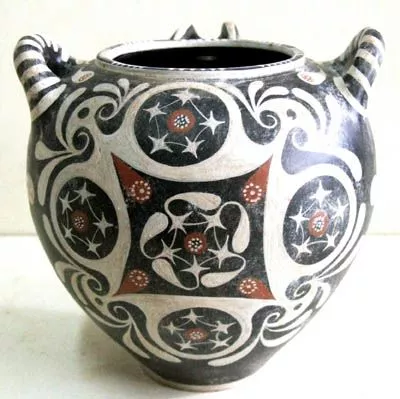
Politics
As far as political power was concerned, the King ran the state. The King’s power was said to have come from the gods, so the King was also the high priest. He was the representative of the gods on earth and maybe even was considered a god himself. The symbol of his power was the peacock’s feather. As civilisation grew and the Minoans developed the use and accuracy of bronze and copper, they built better and better ships. The wealth of forests on the island made this easy. With the boats, they travelled to Egypt, Asia Minor, the Cyclades and the mainland of Greece to conduct their trade of exporting valuable Cretan products and importing things they did not have, such as copper from Cyprus.
As the centuries passed, they set up villages or small towns on other islands, such as Akrotiri on Santorini. They considered the city and palace at Kato Zakro in the centre of the east coast of Crete the major port for dealing with Egypt, Syria, Gaza in Palestine, and Cyprus. Finds made recently at Kato Zakro – which was never robbed. Luckily, show items from both Syria and Egypt. Later they extended to Asia Minor (Turkey), Rhodes and other Aegean islands.
The new palaces built after 1500 BC were magnificent. The biggest was Knossos, followed by Festos, Mallia and Kato Zakro. They were enormous buildings, too, with central courtyards, grand entrances, light wells, superb plumbing and wonderful and huge frescos using art that looks as fresh today as it did three and a half thousand years ago. Knossos, for example, covered over 20,000 square metres and had over 1,400 rooms on several levels. They built roads all over Crete, between Knossos and Festos. There were many villages and beautiful farmsteads. Of course, Crete is in the earthquake zone of the Mediterranean, and it was believed that the older palaces were destroyed by one such earthquake the century before. But that never seemed to trouble the Minoans as they went on and built even more fabulous and more sophisticated palaces.
Where did they go?
This was one of the finest civilisations in the history of humanity. And as I already said, they were never invaded. So how did it all come to such a sudden end? Most likely, the civilisation was destroyed by a massive earthquake following the enormous volcanic eruption on the island of Santorini in the last ten thousand years. The explosion was so big that it killed everyone on Santorini and created a vast lake where once were cliffs. It has even been noted from ice cores from the Arctic where the red dust remains. The volcanic explosion and the earthquake created an enormous tsunami that hit Crete with full force. The new palaces crumbled, and anyone living by the sea would have drowned. We believe that this explosion happened in 1450 BC or thereabouts. There are a couple of varying theories on the date, but all agree on the force of the volcanic eruption.
The days and weeks following would have been like night all day. The dust in the atmosphere is believed to have created a severe cold. Although some survived, it must have been extremely difficult. Dust was blown slowly south easterly by a northwest wind. All of Asia Minor and Palestine were affected. The mainland of Greece was less affected. Fairly quickly after the eruption, the combined forces of the Achean Greeks – the Mycaneans attacked the island. There were very few left to even fight back. The Mycaneans took immediate control of Crete, and a splendid civilisation died.
Table of Contents
Views: 195

